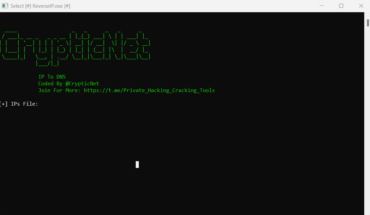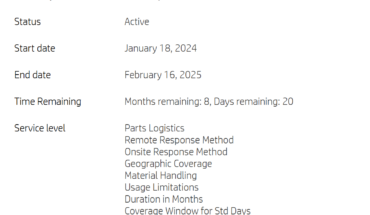
What is Selenium WebDriver?
Selenium WebDriver is an open-source framework designed for
automating web application testing. It allows developers and testers to
interact with web applications programmatically by simulating user actions,
such as clicking buttons, entering text, and navigating between pages.
Key Features of Selenium WebDriver:
- Cross-Browser
Compatibility: Supports major browsers like Chrome, Firefox, Safari,
Edge, and more. - Multiple
Programming Languages: Works with Java, Python, C#, Ruby, JavaScript,
and others. - Dynamic
Web Elements Handling: Easily interacts with dynamic content and
AJAX-based applications. - Integration
with Test Frameworks: Compatible with frameworks like TestNG, JUnit,
and Maven for enhanced test management. - Support
for Headless Browsers: Enables faster testing by running tests in
headless mode without a GUI.
Why Choose Selenium WebDriver for Automation Testing?
- Open-Source
and Free: Selenium WebDriver is completely free to use, making it an
excellent choice for both individuals and organizations. - Wide
Browser and Platform Support: Testers can ensure cross-browser
compatibility by running tests on multiple browsers and platforms. - Rich
Ecosystem: Selenium integrates seamlessly with various tools for
reporting, continuous integration, and test management. - Scalable
and Flexible: It is suitable for projects of all sizes, from
small-scale applications to complex enterprise solutions. - Vibrant
Community Support: Selenium boasts an active community with extensive
resources, including tutorials, forums, and open-source projects.
Getting Started: Setting Up Selenium WebDriver with Java
Here’s a detailed guide to setting up Selenium WebDriver and
writing your first automated test in Java.
Prerequisites:
- Basic
knowledge of Java programming. - Java
Development Kit (JDK) installed on your system. - An IDE
like IntelliJ IDEA or Eclipse.
Step 1: Install Java Development Kit (JDK)
- Download
the latest JDK from Oracle’s
official website or OpenJDK. - Install
the JDK and configure the JAVA_HOME environment variable. - Verify
the installation by running: - java -version
Step 2: Set Up an Integrated Development Environment
(IDE)
Download and install an IDE like IntelliJ IDEA or Eclipse.
These IDEs make it easier to write, debug, and manage your Selenium scripts.
Step 3: Download Selenium Java Client Library
- Visit
the Selenium Downloads page. - Download
the Java bindings for Selenium. - Extract
the ZIP file and note the location of the JAR files.
Step 4: Add Selenium JAR Files to Your Project
- Create
a new project in your IDE. - Add
the Selenium JAR files (and all dependencies) to your project’s build
path.
Step 5: Download Browser Drivers
To interact with browsers, Selenium requires specific
WebDriver executables:
Step 6: Write Your First Selenium Script
Here’s a basic example to get you started:
import org.openqa.selenium.WebDriver;
import org.openqa.selenium.chrome.ChromeDriver;
public class TestScript {
public static void main(String[] args) {
// Set the path to the ChromeDriver executable
System.setProperty("webdriver.chrome.driver", "path_to_chromedriver");
// Initialize WebDriver
WebDriver driver = new ChromeDriver();
// Open a website
driver.get("https://www.example.com");
// Print the page title
System.out.println("Page title is: " + driver.getTitle());
// Close the browser
driver.quit();
}
}Replace path_to_chromedriver with the actual path to your ChromeDriver executable.
Advanced Concepts in Selenium WebDriver
1. Handling Dynamic Web Elements
Web elements like buttons, text fields, and links can change
dynamically. Selenium provides robust locators to handle such scenarios.
import org.openqa.selenium.By;
import org.openqa.selenium.WebDriver;
import org.openqa.selenium.WebElement;
WebElement dynamicElement = driver.findElement(By.xpath("//button[text()='Click Me']"));
dynamicElement.click();2. Explicit Waits
Explicit waits allow you to pause the script execution until
a specific condition is met.
import org.openqa.selenium.By;
import org.openqa.selenium.WebDriver;
import org.openqa.selenium.WebElement;
import org.openqa.selenium.support.ui.WebDriverWait;
import org.openqa.selenium.support.ui.ExpectedConditions;
WebDriverWait wait = new WebDriverWait(driver, 10);
WebElement element = wait.until(ExpectedConditions.presenceOfElementLocated(By.id("element_id")));3. Page Object Model (POM)
The Page Object Model (POM) improves code maintainability by
separating UI elements from test logic.
public class LoginPage {
WebDriver driver;
By username = By.id("username");
By password = By.id("password");
By loginButton = By.id("login");
public LoginPage(WebDriver driver) {
this.driver = driver;
}
public void login(String user, String pass) {
driver.findElement(username).sendKeys(user);
driver.findElement(password).sendKeys(pass);
driver.findElement(loginButton).click();
}
}4. Running Tests in Headless Mode
Headless mode is useful for running tests in CI/CD pipelines
without a browser UI.
import org.openqa.selenium.chrome.ChromeOptions;
ChromeOptions options = new ChromeOptions();
options.addArguments("--headless");
WebDriver driver = new ChromeDriver(options);Common Challenges and How to Overcome Them
Challenge 1: Synchronization Issues
Solution: Use explicit waits to handle
synchronization problems effectively.
Challenge 2: Handling Pop-Ups and Alerts
Solution: Use Selenium’s Alert class to interact with
alerts.
import org.openqa.selenium.Alert;
Alert alert = driver.switchTo().alert();
alert.accept();Challenge 3: Browser Compatibility
Solution: Regularly update browser drivers and test
on multiple browsers to ensure compatibility.
Conclusion
Selenium WebDriver is a versatile and powerful tool that
enables efficient and reliable automation testing for web applications. By
leveraging its capabilities and following best practices, you can streamline
your testing process and achieve faster releases. This guide has covered
everything you need to know to get started with Selenium WebDriver using Java.
Ready to explore more? Dive into advanced topics like
data-driven testing, integrating Selenium with CI/CD tools, or using
cloud-based testing platforms for scalability.
Happy testing!





